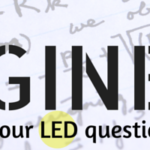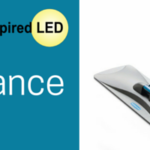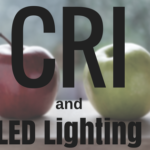Well, what is hot?
It’s important to first understand, fundamentally, the concept of temperature. Wikipedia has this to say about the concept:
Roughly, the temperature of a body at rest is a measure of the mean of the energy of the translational, vibrational and rotational motions of matter’s particle constituents, such as molecules, atoms, and subatomic particles.
So, the temperature of an object is proportional to its internal kinetic energy.

Now, let’s think about this in terms of a standard 60 watt (W) incandescent bulb – which only converts 2% of its energy into visible light. That means 98% of its energy is wasted, converted to infrared radiation and internal energy of the bulb itself, thus raising the temperature of the bulb. As long as the bulb is on, the temperature continues to rise until it can dissipate the same amount of energy into the surrounding environment as what is generated through the lighting process. At this equilibrium, the filament can be hotter than 5000 °F, while the surface temperature of the glass is likely closer to 260 °F. Since water boils at 212 °F, I think it’s safe to say that this is HOT.
Do LED Lights Get Hot?
LEDs necessarily will never be this hot, as the maximum operating temperature for many LEDs is 185 °F, and running well below this temperature is advisable because it will increase lifespan. Staying below this limit is made possible by the increased efficiency of LED lighting. Compared to the 2% efficiency of incandescent lights, LEDs can convert over 15% of their energy to visible light. That means that an LED bulb that puts out the same amount of light as the 60W incandescent bulb only requires 8W of power. Even though LEDs waste 85% of their power, that only amounts to 6.8W, compared to the 58.8W wasted by the incandescent.

Another factor that keeps LEDs cooler than other light sources is that LED fixtures are generally comprised of many individual LEDs. This means that the heat energy can be spread over a larger area, naturally reducing temperatures – our flexible strips are an excellent example of this. Our ultra bright strips, installed under a wooden cabinet, with no additional heat-sinking, measure in at a comfortably warm 110 °F at equilibrium– cool enough to press against your face. Try that with and incandescent bulb… or on second thought, don’t.
For more Frequently Asked Questions, such as “Do LED Lights Get Hot?”, see more blog posts about LED Lighting Facts or shoot us an email at orders@inspiredled.com.



